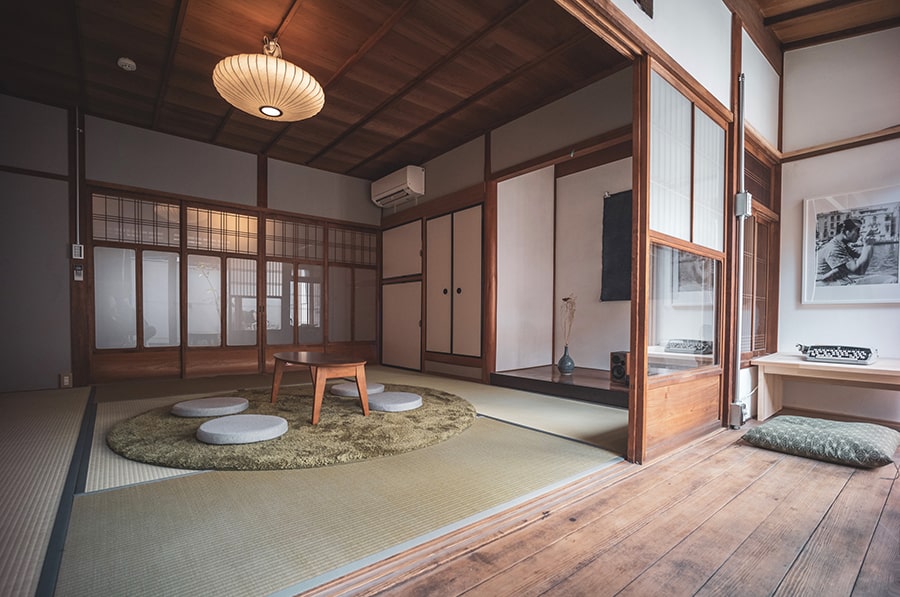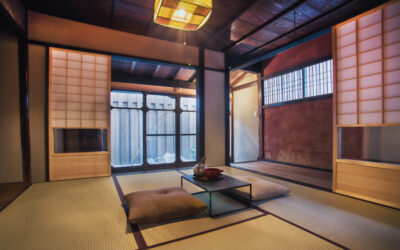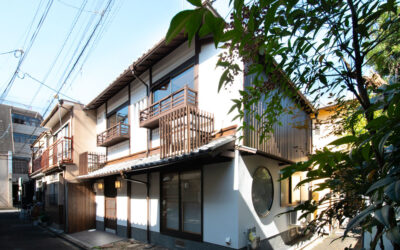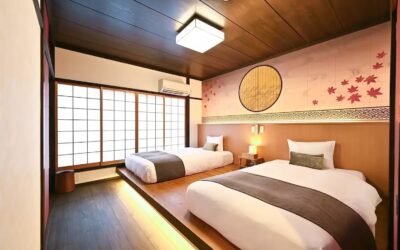Kyoto’s unique charm and cultural significance make it a highly desirable location for both tourists and long-term residents. For property owners and investors, the rental property landscape in Kyoto offers a variety of options, each with distinct characteristics and legal requirements. Here’s a clear and persuasive guide to understanding the types of rental properties available, so you can make an informed decision about your investment or stay.
1. 365-Day Ryokangyo License
These properties are fully licensed to operate year-round and cater to short-term guests. There are several subcategories:
a. Machiya (Traditional Townhouse)
A traditional Kyoto machiya rented exclusively to one group at a time. This machiya license can only be issued to houses built before January 1950. Additionally, the road or alleyway in front of the house must be at least 1.5 meters wide, and an emergency contact person within 800 meters walking distance from the property is required.
PROS:
- Does not require an external check-in counter, reducing operational costs.
- Maintains the cultural charm of Kyoto while providing modern comfort for guests.
- While barrier-free regulations apply, there is some flexibility to preserve traditional features.
CONS:
- Higher market price (80M – 300M JPY).
- Limited to single-group stays.
- Requires a road width of at least 1.5 meters, limiting available properties.
Ideal For: Investors who appreciate Kyoto’s traditional machiya charm and are looking for properties with cultural and rental value.
b. Non-Machiya (With External Check-in Counter)
A non-machiya property rented to one group at a time. This applies to houses built after February 1950. This type of license needs an external check in counter and an emergency contact within 800 meters from the property.
PROS:
- Lower market price (40M – 100M JPY), making it a more accessible investment.
- More inventory available compared to machiyas..
CONS:
- If there is no external check-in counter within 800 meters walking distance, the property cannot obtain a license.
- Additional maintenance costs for an external check-in counter (approx. 30,000 JPY per month or more).
- Limited to single-group stays.
- Must comply with strict barrier-free regulations.
Ideal For: Owners who prefer lower maintenance costs compared to machiyas but still want to attract short-term vacationers.
c. Non-Machiya (With Internal Check-in Counter)
A non-machiya property with an internal check-in counter, categorizing it as a hotel. These houses are built after February 1950 and must comply with barrier-free regulations. The width of the road or alleyway in front of the house must be at least 1.5 meters.
PROS:
- Can accommodate multiple groups simultaneously, maximizing occupancy and revenue.
- No need for an external check-in counter
- More flexibility in property design compared to traditional machiyas..
CONS:
- Requires 24-hour staffed reception, significantly increasing operational costs.
- Must meet stricter hotel-like regulations, adding complexity to licensing and management.
- Requires a road width of at least 1.5 meters
Ideal For: Investors with the capacity to manage hotel-like properties and meet higher regulatory requirements.
2. 180-Day Minpaku License
These properties are licensed for short-term rentals but are limited to 180 operational days per year. An emergency contact person within 800 meters walking distance is required.
PROS:
- No requirement to comply with barrier-free regulations.
- No need for an external check-in counter, reducing operational costs.
- Lower market price (40M – 100M JPY)
- If the alleyway in front of the house is less than 1.5 meters wide, a license can still be obtained if the emergency contact person is within the same Cho (町) (neighborhood unit in Kyoto’s traditional urban planning).
CONS:
- The property owner must live on-site or hire a licensed operator to manage the property.
- Limited operational period (maximum occupancy of 50% per year).
- Shiki Real Estate is fully licensed to manage such properties, making it easier for owners to comply with regulations.
Shiki Real Estate is fully licensed to manage such properties, making it easier for owners to comply with regulations.
Ideal For: Part-time rental property owners who want to balance personal use with rental income.
3. Monthly Rentals (Under Real Estate Laws)
Properties rented out under traditional real estate laws, typically for periods of one month or longer.
PROS:
- No license required, saving time and financial costs.
- Offers flexibility for tenants looking for mid- to long-term stays.
- Easier to manage compared to short-term rental properties.
CONS:
- Lower occupancy rates compared to short-term rentals.
- Limited demand compared to tourist-driven rental options.
Ideal For: Property owners seeking low-maintenance rental opportunities without navigating the complexities of short-term rental licenses.
Why Understanding These Categories Matters
Choosing the right type of rental property can greatly impact your investment success or experience as a guest. Each category comes with its own legal requirements, operational considerations, and target audiences. Whether you’re drawn to the cultural charm of a machiya or the modern convenience of a non-machiya, knowing the differences will help you make the best decision.
Why Choose Shiki Real Estate as Your Realtor?
At Shiki Real Estate, we specialize in navigating Kyoto’s unique property regulations to provide tailored solutions for property owners and guests. From selecting the right property, assisting with licensing, and managing short- and mid-term stays, we are your trusted partner in Kyoto real estate.
If you’re considering purchasing, renting, or managing a property in Kyoto, let us guide you through the process with expert advice and hands-on support.
📩 Contact Shiki Real Estate today to explore your options and turn your Kyoto property dreams into reality!





